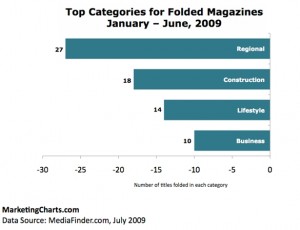 Another group of Rocky Mountain News ex-pats is taking a run at a new-media publishing model with a paid-subscription component. The Rocky Mountain Independent debuted yesterday with a staff of 14 ex-Rocky employees and a determination not to repeat the mistakes that were made by InDenverTimes, a startup that struggles along on life support after badly missing its goal of recruiting 50,000 paying subscribers. Several members of the Independent staff also worked at InDenver Times.
Another group of Rocky Mountain News ex-pats is taking a run at a new-media publishing model with a paid-subscription component. The Rocky Mountain Independent debuted yesterday with a staff of 14 ex-Rocky employees and a determination not to repeat the mistakes that were made by InDenverTimes, a startup that struggles along on life support after badly missing its goal of recruiting 50,000 paying subscribers. Several members of the Independent staff also worked at InDenver Times.
The new site will be mostly free but with a small collection of columns and in-depth pieces behind a $4/mo. pay wall. Staffer Steve Foster (right), a former assistant sports editor at the Rocky Mountain News, likened the model to ESPN, which is mostly ad-supported but which also has a small amount of subscriber-only material for diehard sports enthusiasts. Foster said editorial content will focus on “larger, broader stories…We’re not as interested in following somebody on the campaign trail on a daily basis. We’d rather step back and assess someone’s chances in an election.” If anyone can detect a difference between that approach and a daily newspaper’s please let us know. Foster also said the Independent will run long pieces, too, which challenges conventional wisdom that online readers don’t have the attention span for that kind of material. The reason? As magazines and newspapers shrink, there’s less long-form journalism being published any more. That creates demand.
Some Good News, Some Bad News on Ad Front
 ZenithOptimedia sees some light at the end of the tunnel for advertising. The plunge in global advertising appears to have reached bottom in the second quarter and is poised for some recovery. The agency also trimmed its forecast of a 6.9% decline in advertising spending for 2009. Growth will come mainly in online ads, which is the only segment to expand this year. Within that segment, search advertising has the greatest momentum, with expected growth of 20% this year. The big losers are newspaper and magazine advertising, which the agency expects to decline nearly 15% this year.
ZenithOptimedia sees some light at the end of the tunnel for advertising. The plunge in global advertising appears to have reached bottom in the second quarter and is poised for some recovery. The agency also trimmed its forecast of a 6.9% decline in advertising spending for 2009. Growth will come mainly in online ads, which is the only segment to expand this year. Within that segment, search advertising has the greatest momentum, with expected growth of 20% this year. The big losers are newspaper and magazine advertising, which the agency expects to decline nearly 15% this year.
The pickup can’t come too soon for the beleaguered magazine industry, which has seen 279 titles close their doors this year already and another 43 end their print versions. The good news: there have also been 187 new launches. However, the trend is in the wrong direction, according to MediaFinder, which notes that in the second quarter alone, 77 magazines have launched while 184 have folded.
Overzealous WaPo Marketer Ruffles Feathers
Washington Post publisher Katharine Weymouth cancelled plans for a series of dinners at her home after an overzealous Post marketing executive issued flyers positioning the events as a way for sponsors to buy access to the paper’s journalists and members of Congress. Weymouth said the promotions “should never have happened… We’re not going to do any dinners that would impugn the integrity of the newsroom.” Post Editor Marcus Brauchli said he was “appalled” by the promotions that promised “an exclusive opportunity to participate in the health-care reform debate among the select few who will actually get it done.”
The whole affair was a platform for strong language on the part of participants and observers. Boston University’s Tom Fiedler said he was “astonished” at the Post’s “crossing a boundary line that seems to me painted so brightly white.” Charles Pelton, the Post marketing executive who created the flyers, said he had been “sloppy” in allowing them to go out. A spokesman for Rep. Jim Cooper, a Tennessee Democrat, called the dinner as advertised “a radioactive event.” Everyone flagellated themselves fully and promised not to let it happen again.
Miscellany
Gannett Blog has a letter that was apparently sent to employees of Gannett’s 10-paper Newspaper Network of Central Ohio that outlines plans to consolidate 10 regional newspapers under a single editor. The letter is from Linda Greiwe, publisher of the Newark (Ohio) Advocate. It outlines plans to consolidate page production into two locations and to form an “enterprise and data reporting team of two people” who will “write in-depth daily and project stories on issues that impact as many NNCO markets as possible.” Headcount will be reduced but the job losses are not part of Gannett’s larger 1,400-employee layoff announced last week.
Talking Points Memo, the fledgling new-journalism venture run by Josh Marshall, just took a venture funding round from Marc Andreessen, creator of the Netscape browser. The investment is small – less than $1 million – but it’s an important step for TPM, which has been bootstrap-funded until now. Marshall told TechCrunch the company is profitable and has 11 full-time employees. After this cash infusion, it will no doubt have more.
The bankrupt Tribune Co. may be under legal protection from debtors, but it isn’t protected from the realities of the market. The company’s revenue slid 23% in the first five months of the year and its profit margins have dwindled from 19% to 8% during that time, according to a Morningstar analysis. Tribune Co. doesn’t have to report financial results while in bankruptcy, so Morningstar derved the financial picture from an analysis of “operating receipts” reported so far this year. While the company is still cash flow positive, the declining margins would indicate that its debts will have to be significantly restructured to enable it to emerge from bankruptcy. The good news is that the company appears to be close to selling the Chicago Cubs to a local family for a reported $900 million. The Cubs have been for sale for two years. Tribune bought the team and the stadium for $20.5 million in 1981, representing a capital gain of nearly 4,500% in 28 years.
A new study finds that small newspapers are faring better than large ones, although only marginally. Media Post reports on the study by Inland Press that found that papers with less than 15,000 circulation actually saw revenue increases of 2.4% over the last five years. While that’s tiny, it’s a lot better than the 22% decline experienced by the overall newspaper business. However, the study also found that there’s plenty of pain in small markets, particularly at papers in the 25,000-to-50,000 circulation range that are under heavy debt loads. “If this trend continues, bankruptcy and sale or closure could follow for scores of newspapers, as the plague afflicting big metro dailies infects smaller markets,” it asserts. The problem many markets, of course, is debt. Heavy debt burdens are forcing big publishers to plow profits into loan payments instead of investing in their properties. Small publishers without much debt are better positioned overall to weather the crisis.
Trying to come up with someone to blame for the newspaper industry’s crisis? Try Macy’s. The department store chain has chopped more than half of its spending on newspaper advertising since 2005, Alan Mutter reports. He estimates the bite at $616 million annually. And considering that Macy’s it itself a chimera of smaller department store chains, the aggregate loss may be even larger. Macy’s was the second-largest newspaper advertiser in 2008, surpassed only by Verizon.
Tomorrow is the deadline to get in bids to buy the Boston Globe, so hurry!
The Houston Business Journal conducted a non-scientific poll asking readers, “If your local daily newspaper stopped its print edition, would you miss it?” Fifty-six percent said they wouldn’t, with many adding that biased coverage is their biggest complaint.
The San Francisco Chronicle shut down its presses on Sunday after more than 140 years in the printing business. The function has been outsourced to Transcontinental, Inc., the sixth largest printer in North America. More than 200 unionized pressmen lost their jobs.
Comments
This entry was posted on Tuesday, July 7th, 2009 at 11:33 am and is filed under Facebook, Fake News, Hyper-local, Paywalls, Solutions. You can follow any responses to this entry through the RSS 2.0 feed. Both comments and pings are currently closed.



“Trying to come up with someone to blame for the newspaper industry’s crisis? Try Macy’s. ”
THIS is the problem.
It is not the loss of subscribers. That has been occurring for decades.
It is not that “all the newspapers are left-wing nutjobs”. The population has been moving left for a while.
It is the fact that the “people who make advertising placement decision” have collectively decided that print is “old” and they need to move to “new”.
THIS is the problem that newspapers need to fix.
“Of the 56% who would not care if the print edition went away, readers commented that the daily in their town was often biased in its coverage.”
So, 25% of TOTAL readers think the paper is biased?
BFD.
THIS is not why papers are tanking.
My local (hyper-local) newspaper (Washington Park Profile) is owned/published/edited by a 60-year hippie socialist. It is doing great!
“Overzealous WaPo Marketer Ruffles Feathers”
Ah, the privilege of being publisher. To think some marketing guy took it upon himself to write copy that identified her home address as the venue, set the time and date, set the astronomical prices (a quarter of a million bucks) without clearing it with Ms. Weymouth, has to be kidding himself. Of course he did.
So he falls on his sword to save her reputation and his job. Accepting blame is part of good leadership. Ms. Weymouth falls short in that department.
[…] Some of those reporters have jumped ship and are trying their hand at another new site, the Rocky Mountain Independent, that provides a blend of paid and free content (see story here). […]